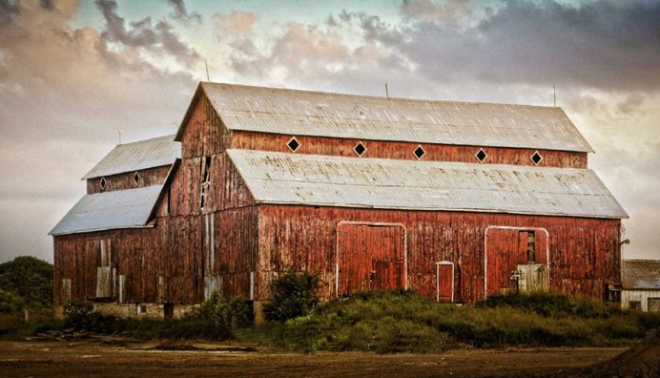The Importance of Rural Heritage
At today’s City Council meeting, permission was granted to Richcraft Homes to take down the iconic Bradley/Craig Barn in Stittsville and move it to Saunders Farm, over 20 kilometres away. I disagreed with this decision. The heritage value of the barn is deeply connected to its original location – the very spot where for generations, farmers tilled their soil and made their livelihoods. The removal of the barn from its present site will mean it is no longer protected under the Ontario Heritage Act, originally granted by Council in 2010. While the Built Heritage Sub-Committee supported city staff’s recommendation to refuse Richcraft’s application to demolish the barn, Planning Committee and City Council overturned that recommendation. Councillors Leiper, McKenney and I dissented on today’s vote.
I consider the outcome a disappointing loss for the built heritage of our growing City. Here are three reasons why.
If Not This Barn, then which one?
The Bradley/Craig barn is recognized as an unparalled example of its kind and the last barn built by famed local barnbuilder John Cummings in 1873. It was the only barn designated for its heritage value in the City of Ottawa outside of the Central Experimental Farm.
Barns offer all of us a physical reminder of the rural origins of our City. This barn is an iconic part of Stittsville and its presence imparts a sense of place and history. By not defending the Bradley/Craig Barn, which was seen as the best barn the City could protect, City Council is sending a message that we needn’t preserve any barns, eviscerating from our urbanized landscape any memory of the rural life of our forbearers.
A Missed Opportunity
By moving the barn, Richcraft is missing an opportunity to repurpose it into something exciting and valuable, from both a financial and community perspective. Research shows that properties designated as heritage actually gain monetary value. One researcher who studied the market value of almost 3,000 properties in Ontario found that 75 per cent of heritage-designated properties perform at least as good and more often better than the local average real estate market.
There are fewer sites designated as heritage in the suburban and rural areas, which further increases the unique value these buildings can lend to redevelopments. A re-imagined and repurposed Bradley/Craig barn could have made this into a landmark destination. There are many examples – both within our own region and internationally – of creative adaptive re-uses of barns. From conference, event or concert venues, to one-of-a kind retail spaces, to wineries, to farmers markets and more, examples abound of thoughtful repurposing that enhance the property, celebrate the history and contribute to community life. Richcraft acknowledged it did not actively consider such ideas, something Council should have required before permission to dismantle and move the barn was granted.
Not in the Public Interest
Heritage designation is a serious tool – the City doesn’t use it lightly. Designation is only granted in cases when the building in question meets minimum criteria as set out in law, underpinned by a belief that there is public value in retaining our built heritage. Once designated, there is an expectation that owners will make best efforts to maintain or adapt their buildings, to be stewards of that public good. The fact that an owner perceives greater financial opportunity from ridding a property from its built heritage should not on its own justify granting the permission to remove it.
As the City grows, and the urban boundary expands further into formerly agricultural land, there is a need to keep a contextual memory of our rural roots. In light of the homogeny of much of the new retail and commercial plazas sprouting from the very fields where farmers once toiled, the importance - and the opportunity - of protecting outstanding examples of our rural heritage becomes that much greater. Today, Ottawa irrevocably lost a piece of its history in time and place.
Where Bradley/Craig barn once stood, Richcraft now plans to build big box retail with ample parking: sad lyrics for a song Joni Mitchell might have written.
Tobi Nussbaum is the Ottawa City Councillor for Rideau-Rockcliffe and is Chair of the Built Heritage Sub-committee.
